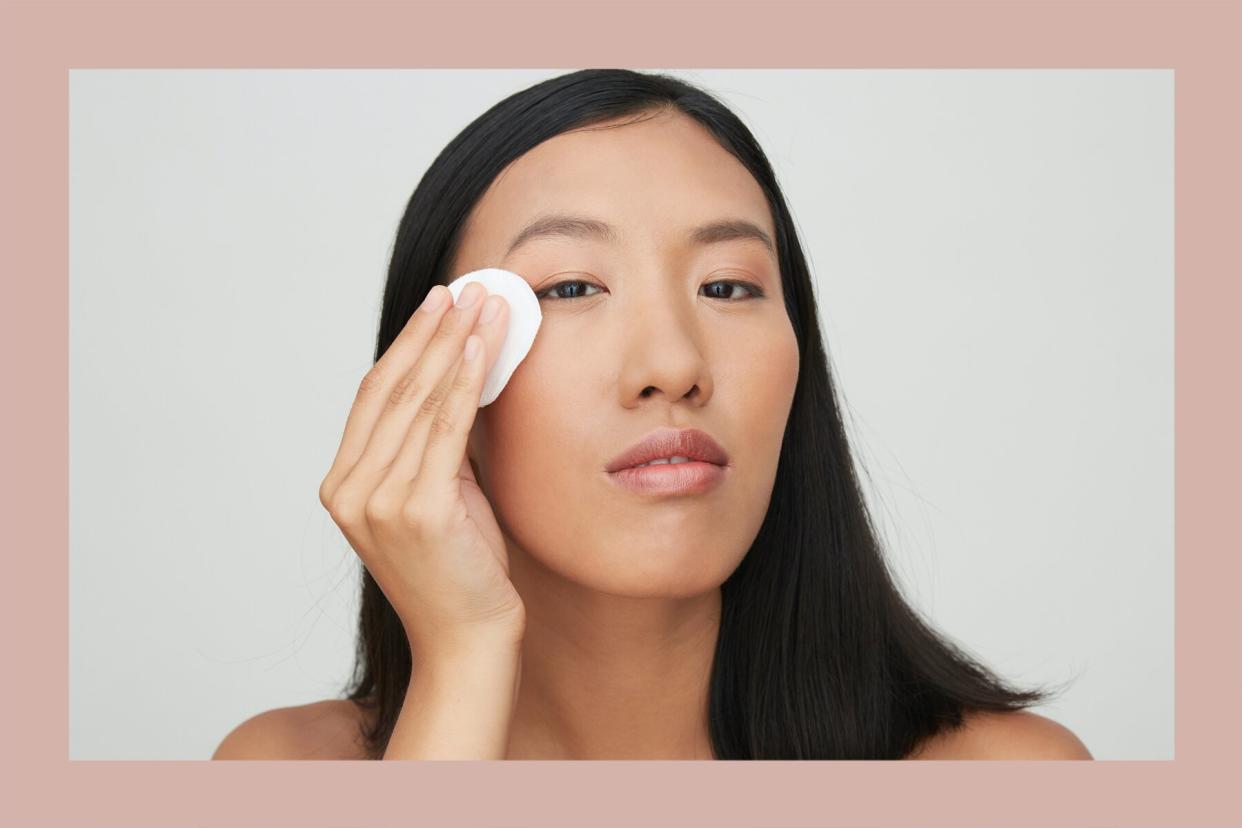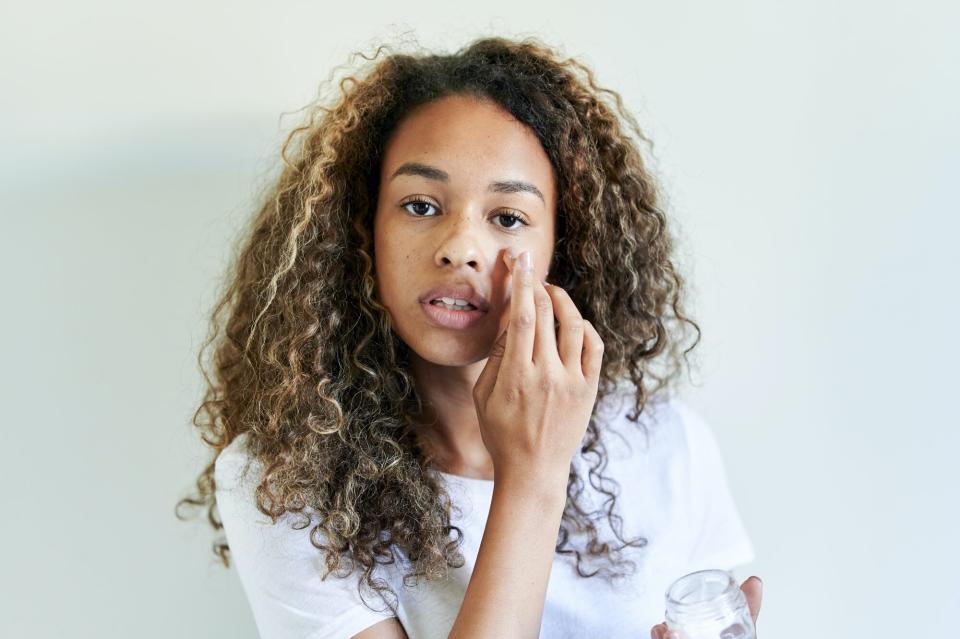How Long to Use Skincare Products Before Seeing Results, According to Experts

Getty Images
Skincare product reviews often make some pretty big claims. They'll say things like, "this product completely erased my fine lines and wrinkles," or "this serum made me look like I got Botox overnight." So, when trying out new skincare products, it's no surprise that many of us are looking to get dramatic and immediate results. The reality is, however, that things rarely work out that way.
In fact, Manhattan-based board-certified dermatologist Joshua Zeichner, M.D., says that one of the common mistakes people make when trying out new products is expecting to see results right away. While some effects can be easy to judge quickly, like whether or not a product hydrates dry skin, other results, like more even skin tone or reduction of wrinkles, require a bit more patience. As P&G senior skincare scientist, Jennifer Werner, explains, "skin cells turnover about every 28 days, so it could take a month or more to start seeing results."
So, if a new skincare product isn't instantly transforming your skin, don't get discouraged just yet. Depending on the specific product, the proposed benefits, your skin type, and more factors, it could take anywhere from a few minutes to a few months to experience the extent of their effects. To get more clarity, we asked Dr. Zeichner and two skincare scientists to help us break down the general timeline for how long you should use different skincare products before expecting results. Keep reading to learn more.
How long should skincare products take to work?
Cleansers:
Because the purpose of a cleanser is pretty straightforward—to cleanse the skin of dirt and impurities—it's appropriate to expect results right away. "Especially when you are wearing makeup, a cleanser will give immediate improvements in its ability to remove soiling from the skin," Dr. Zeichner says. "You should be able to visibly see makeup removed from the skin and improvement in shine or a greasy appearance."
However, Frauke Neuser, Ph.D., leading principal scientist at Olay, says it's important to not only look at how well a cleanser works to cleanse the skin, but also assess whether or not the product is compatible with your skin type. For example, if your skin feels tight, itchy, or irritated after using a cleanser, then it's probably too drying or harsh for your skin. If a cleanser is working well for you: "Your skin should feel prepped and ready to begin the rest of your skin care routine," Werner says.
Toners:
Toners can be tricky to test because they don't function as "the main hero of your skincare routine," Dr. Neuser says. Toners play more of a supporting role, she explains, acting as an additional cleansing step, while also prepping the skin for the next products, like serums and moisturizers in your routine—so the results can be hard to isolate. However, you should still be able to notice, as with cleansers, rather immediate effects in how well a toner is working to remove any extra impurities or excess oil from the skin.
In addition to providing a second cleanse, many toners have a host of other benefits, like combatting hyperpigmentation and improving skin texture. These longer-term effects will take closer to four or more weeks to show up, Dr. Neuser says.
Serums:
Serums are lightweight moisturizers that can have a wide range of benefits and purposes—from minimizing dark spots, brightening dull skin, and reducing the appearance of wrinkles. As Werner explains, serums are generally formulated to have a thinner consistency, which helps them deliver key ingredients (like hyaluronic acid, vitamin C, glycolic acid, depending on the product) into the surface of your skin. However, even though serums are generally powerful formulas, it can still take about a month for you to start seeing results," she explains.
If you're trying out a serum for targeted treatment, such as the minimization of dark spots, Dr. Neuser recommends taking pictures along the way to check in on your skin's progress. Before trying the serum, take photos of the areas in which you most want to see improvements, and then take photos of those same spots in about a month to see if you can notice any changes.

Getty Images
Moisturizers:
A good moisturizer should be like a glass of cold water on a hot day: immediate relief. So, you should be able to notice if a moisturizer is hydrating your skin and relieving dryness right away. However, Werner says you should continue checking in on your skin throughout the day to determine if the moisturizer is really doing its job beyond the initial application. "A good way to tell if your new moisturizer is working is asking yourself if your skin feels dry at any point in the day," she says. "If it does, you should either use more product when you are applying or potentially think about switching to a different moisturizer that better fits your skin's type and needs." (Werner says the appropriate amount of facial moisturizer to use should be about the size of a quarter.)
Dry skin types may need higher levels of moisturizing ingredients to really get the job done, Werner explains, adding that glycerin, niacinamide, and hyaluronic acid are all great ingredients to seek out in moisturizers.
Powerful moisturizers can offer other quick visible results in addition to just relieving dryness, Dr. Zeichner explains. "Think of hyaluronic acid like a sponge which draws in water to the outer skin layers," he says. From this fast hydration and plumping, he adds that you may see some degree of immediate improvement in the appearance of fine lines and wrinkles and skin radiance.
Retinol:
This buzzy ingredient is highly acclaimed for its anti-aging benefits—but don't let all the hype trick you into thinking that all your wrinkles and fine lines should disappear overnight. While you may be able to notice some results within the first week or so of use, Dr. Zeichner says that "to see significant improvements in skin texture and lines, retinol must be used regularly for weeks or even months."
The most immediate effect of retinol, however, is often irritation. Because retinol is such a powerful active ingredient, it can take time for your skin to get used to its effects, and it may lead to some initial dryness, redness, and flakiness in the process. This should improve after about the first two weeks if you are careful with how you incorporate the product into your routine.
Acne products:
As frustrating as it can be to deal with breakouts, the path to clear skin can be a long one. "When it comes to treating conditions like acne, it takes several weeks or even months to start seeing significant improvements," Dr. Zeichner says. "It's important to address the underlying causes of acne, which does not happen overnight."
Since acne can have a wide range of causes, from stress, genetics, hormones, and more, one product alone often won't be the answer to completely clear your skin. However, Dr. Zeichner says that sticking to a treatment and staying patient pays off. Dr. Zeichner, who recommends the FDA-approved Bliss Clear Genius Collection for acne treatment, says he often tells his patients to stick with an acne regimen for at least one to two months to accurately judge whether or not it's working.
"It's important to stick to a routine because giving up too quickly means you won't experience the true benefits," Dr. Zeichner says.

